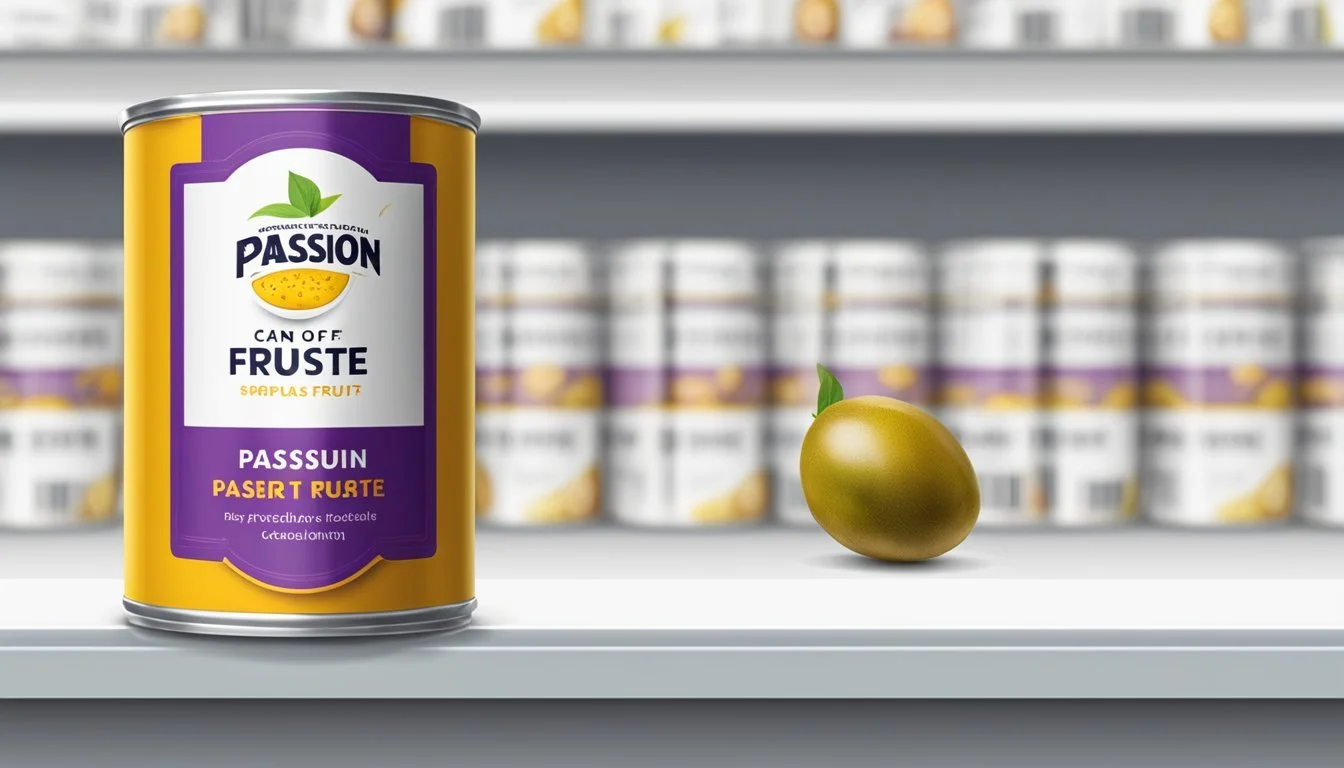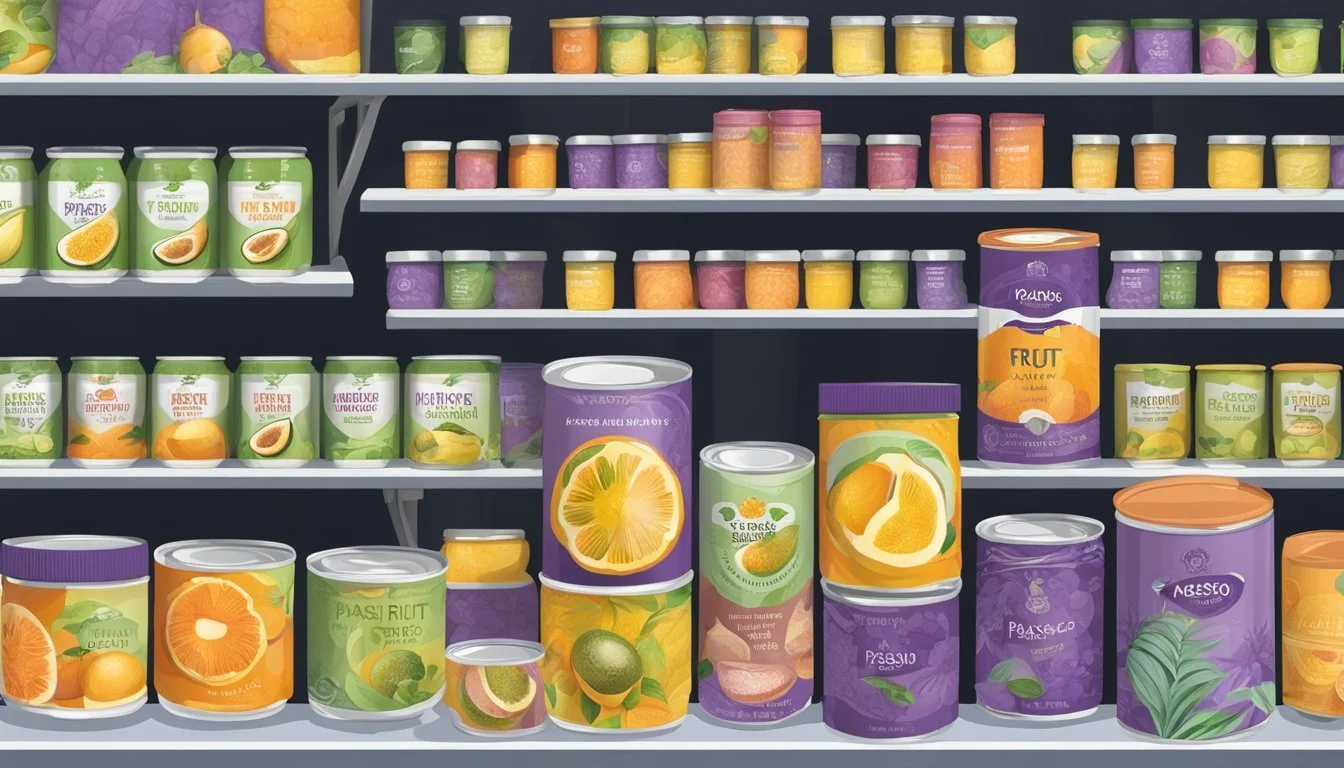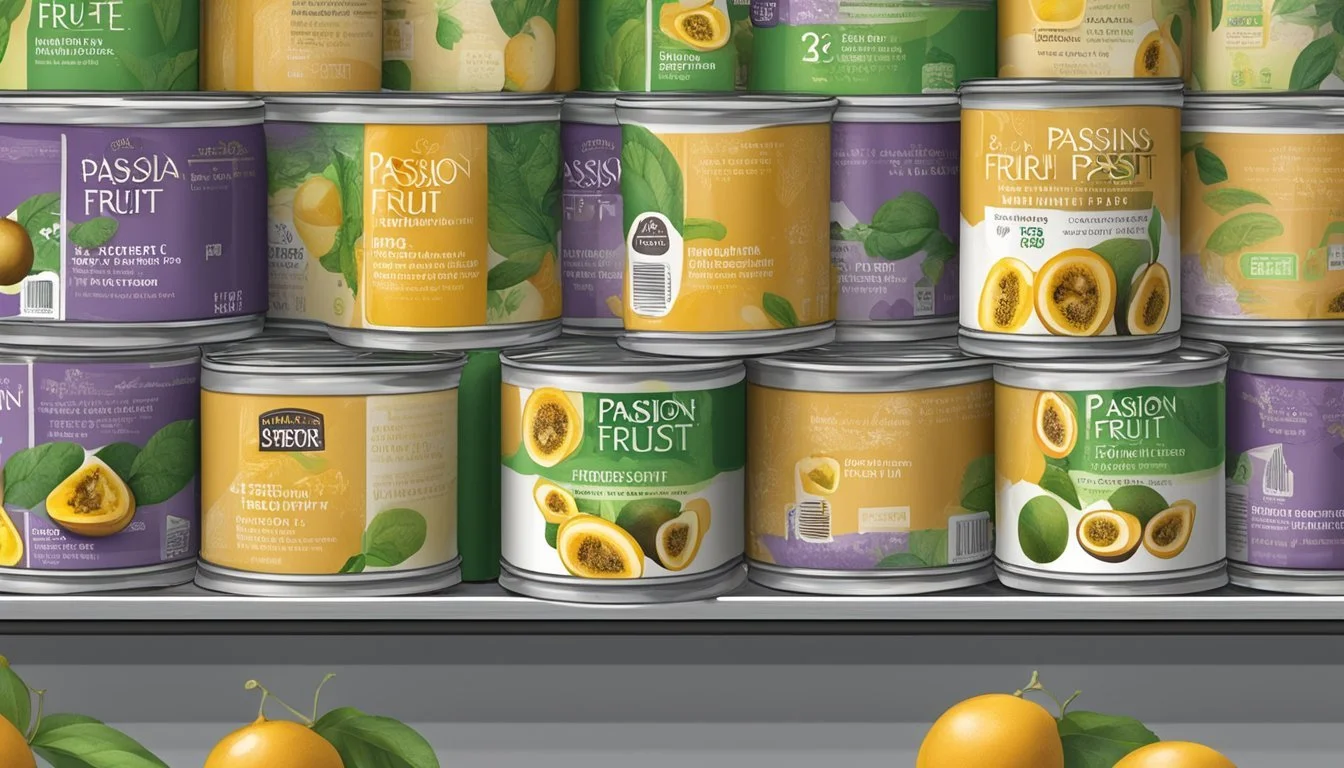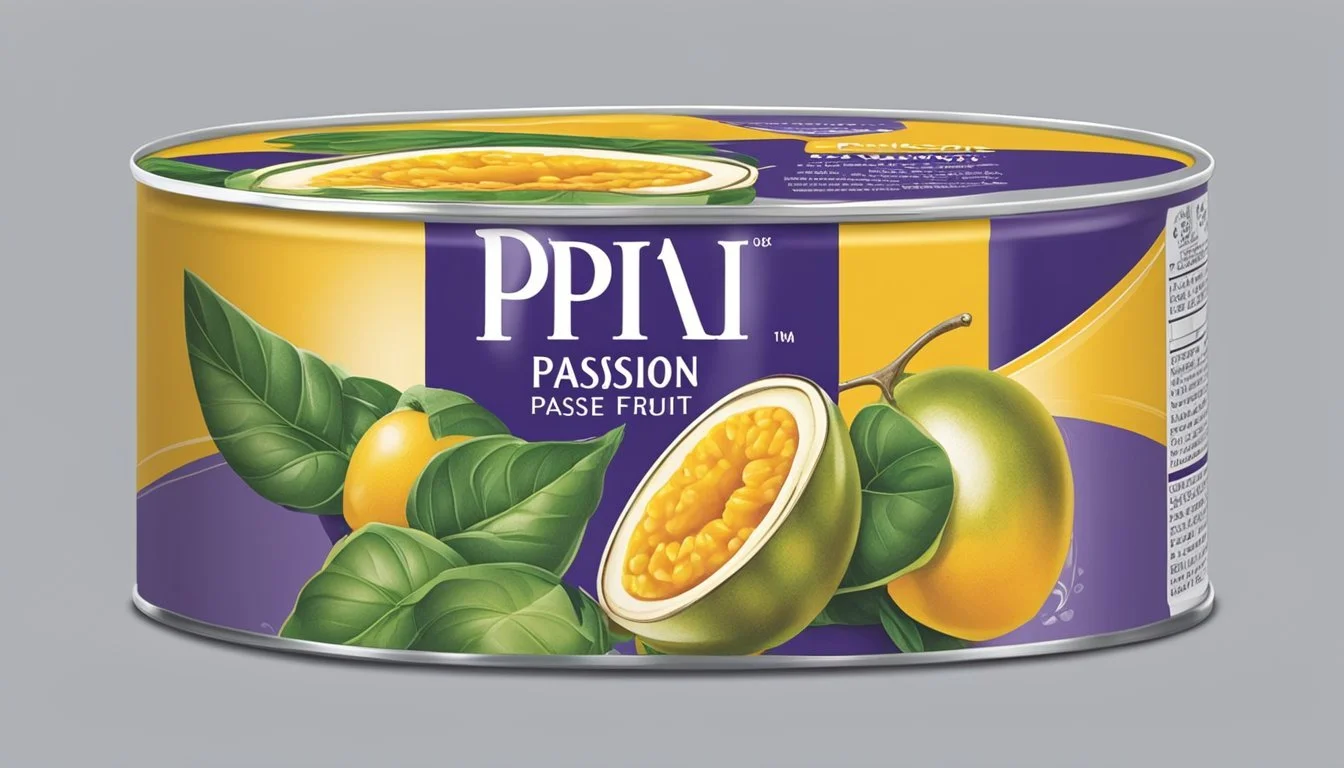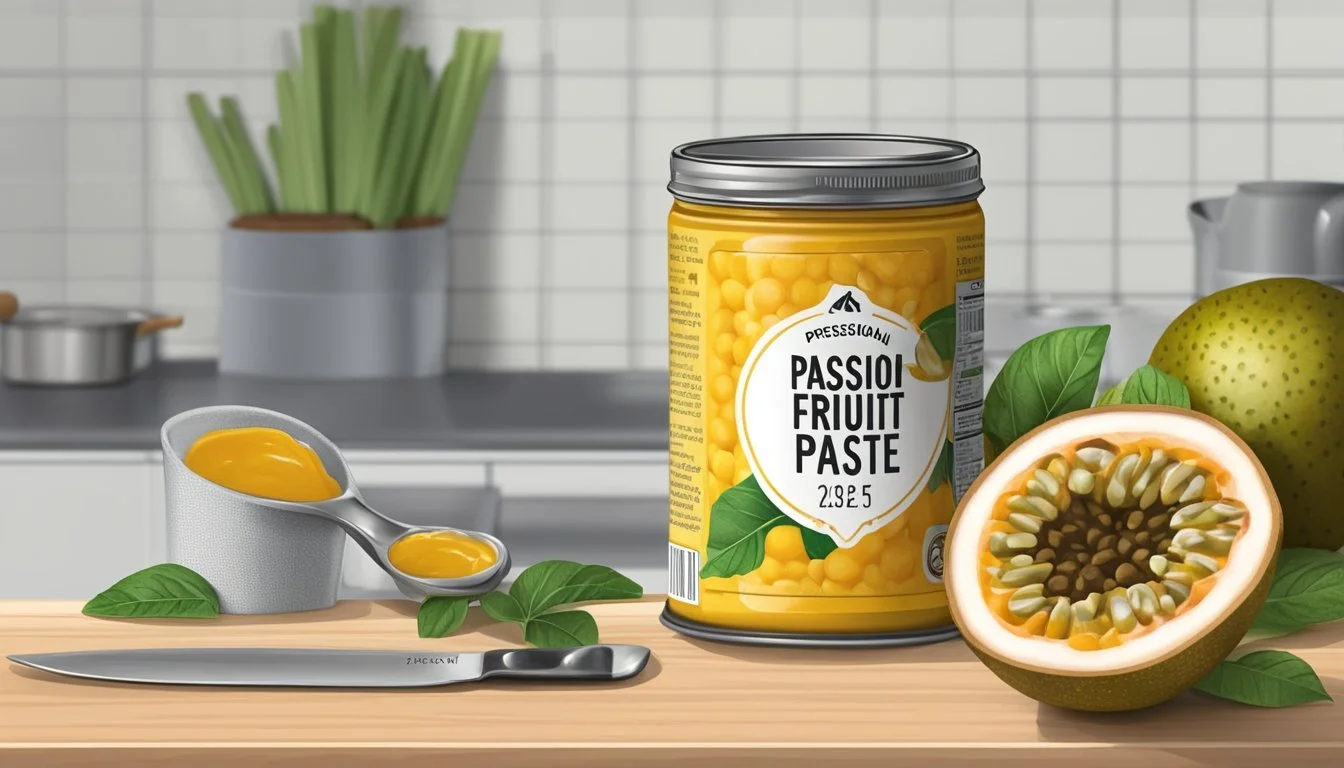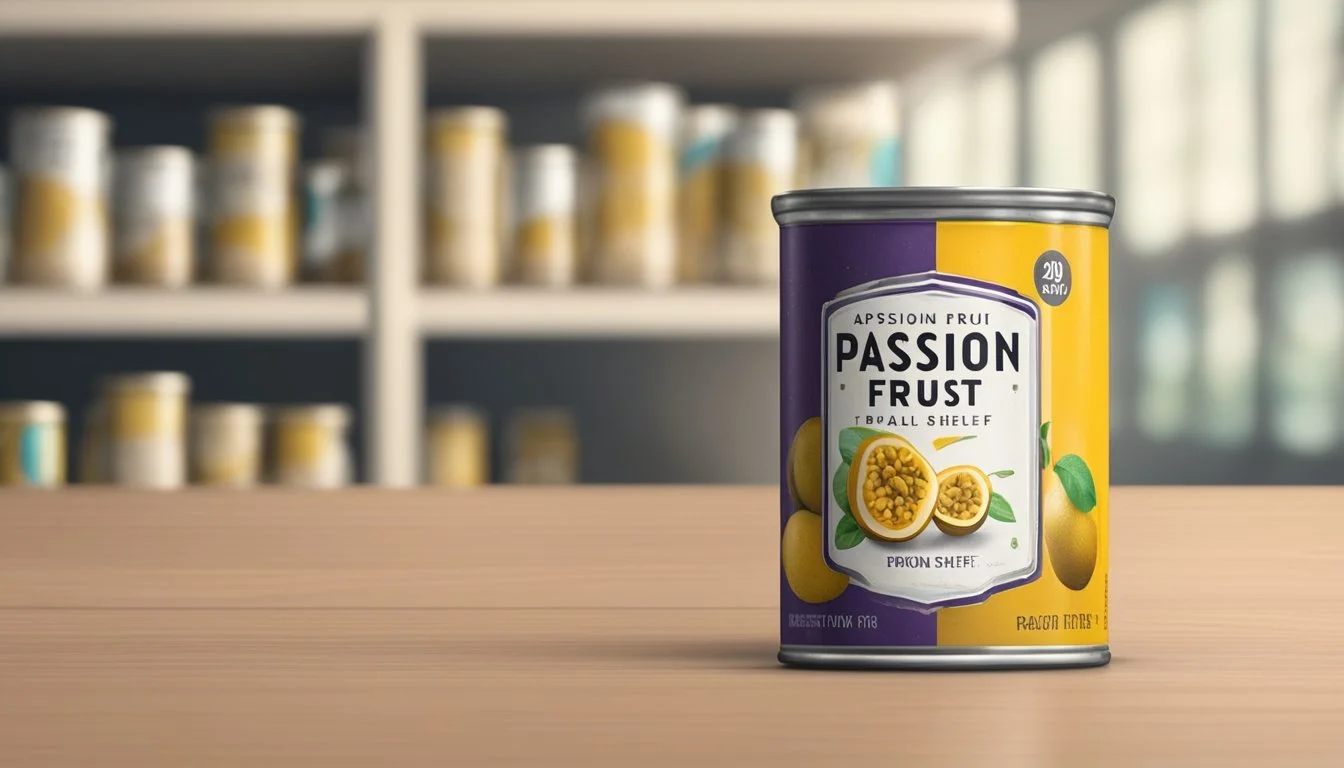How Long Does Canned Passion Fruit Paste Last?
Shelf Life and Storage Tips
Canned passion fruit paste is a popular ingredient for its ability to infuse tropical flavor into various dishes and desserts. The shelf life of canned passion fruit paste is a point of interest for both consumers and manufacturers. Under ideal storage conditions, an unopened can of passion fruit (What wine goes well with fruit?) paste can retain its quality for years. The high sugar content and the canning process, which involves sealing the food in airtight containers and sterilizing them to destroy microorganisms, contribute to its longevity. The product's nutritional value, which includes vitamins and dietary fiber, remains stable over time as long as the can remains undamaged and is stored in a cool, dry place.
Once opened, the preservation of the paste's quality becomes more contingent on proper storage. Exposure to air, moisture, and fluctuating temperatures can degrade the taste and nutritional content of the fruit paste. Refrigeration becomes necessary after opening, and consumers can expect the quality to remain high for a specified period, typically ranging from a few weeks to several months.
To maintain the highest quality of the opened canned passion fruit paste, it should be transferred to an airtight container if not stored in its original can. This practice prevents the introduction of contaminants and preserves the fruit paste's freshness. The exact duration of shelf life post-opening will depend on the specific product, so it's advisable to adhere to the manufacturer's recommendations stated on the label for optimal flavor and nutrition retention.
Understanding Canned Fruit
When exploring the longevity of canned fruit such as passion fruit paste, it's crucial to consider the canning process and the types of canned fruit available. These factors directly impact shelf life and quality.
Canning Process
The canning process is designed to preserve food for extended periods. For passion fruit paste, this involves sealing the puree or syrup-based mixture in an airtight container and then heating it to eliminate potential pathogens. This heat treatment also inactivates enzymes that cause spoilage, ensuring that the fruit maintains its taste and nutritional value over time. Preservatives may or may not be added depending on the product.
Types of Canned Fruit
Canned fruit can be classified primarily into two categories:
Canned in syrup: A method often used for sweetening and preserving fruits, including passion fruit. The high sugar content in syrup aids in preserving the fruit.
Canned in puree or juice: In this process, fruits like passion fruit are canned in their own juice or a pureed form. This variety is often preferred for its lower sugar content and closer-to-fresh taste.
Each type of canned fruit, whether in syrup or puree, has a different shelf life due to the varying levels of sugar and preservatives, which contribute to the longevity of the canned goods. Passion fruit paste, typically canned with preservatives, is expected to last a considerable time while maintaining quality.
Factors Influencing Shelf Life
Certain factors are critical in determining the shelf-life of canned passion fruit paste. Here, we will examine how the storage environment, preservation methods, and packaging integrity significantly affect its longevity.
Storage Environment
Temperature: The storage temperature is crucial for maintaining the quality of canned passion fruit paste. It should be kept in a cool, dry place to prevent spoilage and maintain its flavor. Room temperature is generally recommended, but ensuring that this temperature is stable and not subject to drastic changes is vital.
Room Temperature: Ideal conditions mean a consistent temperature range between 50°F to 70°F (10°C to 21°C).
Cool, Dry Place: A pantry or cupboard away from heat sources, moisture, and direct sunlight.
Preservation Methods
The method of preservation directly influences the duration that canned passion fruit paste remains consumable.
Airtight Container: The paste should be sealed in an airtight container to prevent oxidation and contamination.
Vacuum Seal: A vacuum seal additionally protects against bacteria and extends shelf-life by removing air from the container.
Packaging Integrity
Packaging: The integrity of the packaging is a critical defensive line against external factors that can cause degradation.
Mason Jars: If the paste is home-canned, ensuring it's sealed in sterile mason jars can increase its shelf-life.
Airtight Seals: Commercially canned pastes should have undamaged seals. Any bulging, rusting, or leaking containers should be discarded.
By being attentive to these details, one can ensure the optimal shelf-life for canned passion fruit paste.
Identifying Spoilage
When it comes to canned passion fruit paste, it's crucial to recognize spoilage signs before consumption to prevent foodborne illnesses. One should inspect for any signals of spoilage through visual and olfactory cues.
Visual Cues
Visual inspection can be telling if the canned passion fruit paste has gone bad. Key signs include:
Swelling: Cans that show signs of swelling may indicate bacterial growth and the production of gases from spoilage.
Rust or Dents: Compromised integrity of the can, such as rust or sharp dents, might have allowed bacteria to enter.
Mold: Any visible mold growth inside the can once opened is a definite sign of spoilage.
Discoloration: Changes in the color of the passion fruit paste could also suggest deterioration in quality.
Olfactory Indicators
The sense of smell is a powerful tool for detecting spoilage:
Unusual Odors: The presence of foul, sour, or otherwise off-putting smells strongly indicates spoilage.
Lack of Fruit Aroma: If the aromatic smell typical of passion fruit is missing, this may be a sign that the paste is no longer good to consume.
Canned passion fruit paste should be discarded if any signs of spoilage are detected to ensure safety and avoid the consumption of potentially harmful bacteria or mold.
Safety and Health Considerations
When considering the safety and health of consuming canned passion fruit paste, one must account for foodborne illness risks and the nutritional value retained over time. Proper storage is paramount to maintain both safety and nutrition.
Foodborne Illness Risks
The safety of canned passion fruit paste largely depends on proper storage and adherence to hygiene standards during the canning process. Consumers should store canned goods in a cool, dry place to prevent spoilage. Signs of spoilage include bulging cans, leaks, or off odors, which could indicate botulism, a serious foodborne illness. Containers must be sealed correctly to avoid the growth of harmful bacteria. Once opened, the paste should be refrigerated and consumed within five to seven days to minimize the risk of contamination.
Nutritional Values
Canned passion fruit paste maintains much of its nutritional content, including significant amounts of vitamin C and potassium. Vitamin C is known for its antioxidant properties and potassium for its role in maintaining blood pressure and cardiovascular health. Over time, exposure to heat and light can degrade these nutrients, hence the importance of proper storage. While the canning process may reduce the levels of certain vitamins, it typically does not affect mineral content such as iron. Even so, preserved passion fruit can continue to be a healthy addition to one's diet within the recommended storage timeframe.
Optimal Storage Practices
To ensure the longevity and quality of canned passion fruit paste, one must adhere to proper storage methods before and after the product is opened.
Before Opening
Canned passion fruit paste should be stored in a cool, dry place away from direct sunlight to prevent degradation of flavors and nutrients. Ideal storage conditions include maintaining a consistent temperature away from the variations of kitchen appliances. It is not necessary to refrigerate unopened cans, and they remain stable at room temperature.
Storage location: Cool, dry pantry or cupboard
Ideal condition to avoid: Direct sunlight and temperature fluctuations
After Opening
Once opened, the remainder of the passion fruit paste should be transferred to a sealed container to maintain freshness and minimize moisture exposure. The container must then be stored in the refrigerator to slow down spoilage and preserve quality.
Storage Tips for Opened Paste:
Refrigerate at: 4°C (39°F)
Container type: Airtight
Shelf-life in the fridge: Within 5-7 days
If one intends to use the opened paste sporadically, it may be frozen to extend its shelf life. In this case, appropriate portions should be placed in freezer-safe bags or containers, labeled with the date to ensure usage within optimal time.
Freezer temperature: Below -18°C (0°F)
Shelf-life in the freezer: Up to 3 months
Note for defrosting: Thaw in the refrigerator prior to use
Extending Shelf Life
To preserve the flavor and freshness of passion fruit paste, proper storage methods are key. These techniques not only prevent spoilage but also maintain quality.
Freezing Excess
When excess passion fruit paste remains, freezing it can effectively extend its shelf life. One should transfer the paste into an airtight container or a heavy-duty freezer bag. It's important to label the bag with the date of freezing as frozen passion fruit paste can maintain quality for up to six months. Prior to use, defrosting it in the refrigerator overnight ensures the paste remains consistent in texture without unnecessary icing.
Creative Usage
For passion fruit paste nearing its expiration, incorporating it into various recipes can maximize its use and avoid waste. It serves as a flavorful addition to fruit salads, enriches salsas for a tropical twist, or can be blended into vinaigrettes. To retain freshness, leftovers should be used within a couple of days, and stirring the paste into a recipe ensures no drop of flavor is left behind.
Utilization in Cooking
Canned passion fruit paste provides a consistent, sweet, and tropical flavor that is versatile in various culinary applications, from desserts to savory dishes.
Recipes and Pairings
Canned passion fruit paste is commonly used in recipes where its bold, sweet-tart flavor enhances the dish. Its tropical essence pairs exceptionally well with:
Desserts: A dollop of passion fruit paste adds a vibrant, citrusy layer to cheesecakes, mousses, and pavlovas. It also imparts a rich, orange hue to the presentation.
Cakes and Cupcakes: Swirl the paste into batters for an aromatic twist.
Tarts: Layer beneath or mix with custards for a pronounced fruity dimension.
Salads: A small amount of paste can be whisked into vinaigrettes, contributing a sweet and tangy profile that complements both leafy greens and fruit salads.
Meats: When glazed onto meats such as chicken or pork, the paste caramelizes to create a delectable, slightly tropical crust, elevating the dish's flavor complexity.
Sauces and Marinades: Incorporating passion fruit paste can transform a simple sauce or marinade into an exotic accompaniment, suitable for fish or tofu.
Substitutes for Fresh Fruit
While fresh passion fruit offers a bright, acidic taste, canned passion fruit paste serves as a satisfactory substitute when fresh fruit is unavailable. It is essential in:
Vegetable Dishes: A hint of passion fruit paste can replace lemon or lime in steamed vegetables, giving them a distinctive twist.
Soups and Stews: For an unexpected zing, one can add the paste to soups or stews. Be mindful of the quantity to ensure the flavor complements rather than overwhelms the dish.
Purees and Compotes: When ripe passion fruit is out of season, the paste can mimic the sweet intensity in purees or compotes, pairing well with other fruits or being used as a base for sauces.
Signs of Quality Changes
As canned passion fruit paste ages, it may experience changes in taste and texture that can signal a decline in quality.
Taste Alterations
Changes in sweetness or the development of a bitter taste can indicate that the passion fruit paste is past its prime. While it may remain safe to consume, the flavor profile may shift, becoming less vibrant. The natural sweetness can diminish over time, and unwelcome flavors, potentially hinting at the onset of spoilage, might emerge.
Texture Variations
The texture of canned passion fruit paste should be smooth and consistent. Over time, it may become either excessively thick or watery, suggesting quality degradation. If the paste was once spreadable but now appears lumpy or separates, these are clear signs that the product has undergone undesirable changes.
Final Considerations
When discussing the shelf life of canned passion fruit paste, two pivotal factors are at play: the expiration dates on packaging and the strategies for waste prevention. These elements help consumers make informed decisions about storage, consumption, and purchase.
Expiration Dates
Canned passion fruit paste typically comes with an expiration date or best by date stamped on its packaging. Store-bought canned goods can remain safe to consume well beyond this date if the integrity of the can is not compromised and it has been stored properly—in a cool, dry place. For home-canned goods, a period of up to one year is recommended for optimal flavor, although they may remain safe for consumption for longer periods if the canning process is handled correctly.
Waste Prevention
To minimize food waste, consumers should monitor both store-canned fruit and home-canned goods. It’s advisable to:
Regularly check the stock to use older cans first (FIFO method: first in, first out).
Ensure cans are free from dents, rust, or swelling as these can indicate potential spoilage.
Prepare and can passion fruit paste in quantities that are likely to be consumed within a reasonable time frame.
By understanding these factors, consumers can enjoy the taste of canned passion fruit paste while adhering to food safety guidelines and reducing waste.

